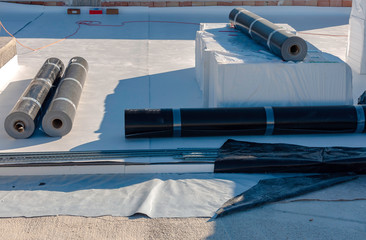Every building, home or industrial, must have a waterproofing system that effectively manages the flow of moisture in and around the building. Without these coatings, buildings can suffer damage from external water, as well as damage from internal water leaking through windows, doors, and other openings that aren’t covered with the correct waterproofing material. Some examples of waterproofing systems are discussed below.

A waterproofing system can prevent leaks from underground water diversions such as those caused by foundation footer drains, crawl spaces, and manholes. In many homes, basement walls are made from concrete and are lined with liners that are filled with insulation. The liners also contain some waterproofing material, such as a rubber or plastic membrane. Unfortunately, this membrane is not effective at preventing water from seeping in through the gaps in the walls. This can result in damage to the interior of the house and may allow basement mold to develop.
A waterproofing system can prevent the growth of mold inside homes by providing a protective barrier that stops air pockets and moisture exchange between the interior of the home and outside. In older houses, an uninsulated or poorly insulated door, which often has no sealing, can let in a considerable amount of moisture that seeps in from the exterior. If there are cracks in the door, the result can be a very severe moisture problem in the interior of the home. Sheet membranes can either be foam or rubber and are commonly used for this purpose.
A major benefit of a waterproofing system is the prevention of damage caused by water. Moisture causes warping, cracking, and other forms of structural damage to a structure. For this reason, it’s necessary to keep your building as dry as possible. When there is a leak in the building, the moisture that is let in can damage the structural framing, as well as any underlying drywall, insulation, or sub-flooring materials. It’s not just the structure that becomes damaged but can also cause extensive damage to your appliances, furnishings, and the framing around them. And more importantly, the longer this goes on, the more costly the repairs become.
Leaks in the roof are one of the most common reasons why buildings need to be waterproofed. This is also the reason why Waterproofing recommends using a membrane for this purpose. With a variety of materials available, you can easily select a product that is suitable for your particular structure. And if the water damage is not very severe, then the cost will be quickly recovered with minimal repair work required.
In terms of structural issues, water leaks in the interior of the house can lead to structural damage to the entire structure. In fact, some recent studies suggest that up to 80% of all leaky buildings have some sort of moisture issue. One of the main reasons why water leaks develop is because poor waterproofing systems allow air to circulate, and this allows water to get in. If the interior walls of your house are not properly sealed, you will also run the risk of dampness throughout the building.
Another example is the presence of condensation. When condensation builds up on the windows, walls, or even underneath your carpets, it will create additional dampness in your living space. But when the humidity rises inside the building and condensation forms on the roof, walls, or floors, this will cause structural damage. Also, without the proper waterproofing system, excess moisture will build up in your basement. In both situations, excess moisture will damage the surrounding structural issues, such as the framing.
A waterproofing membrane may be used in many different situations. It is commonly applied to prevent leaks from happening in residential properties, and commercial properties, it can even prevent leaks from occurring altogether. In both cases, the waterproofing membrane will be applied above the soil and below the foundation. If there is any part of the building that needs to be waterproofed, this step should always be done first. A waterproofing membrane will save you time and money, preventing water damage and costly repairs.
